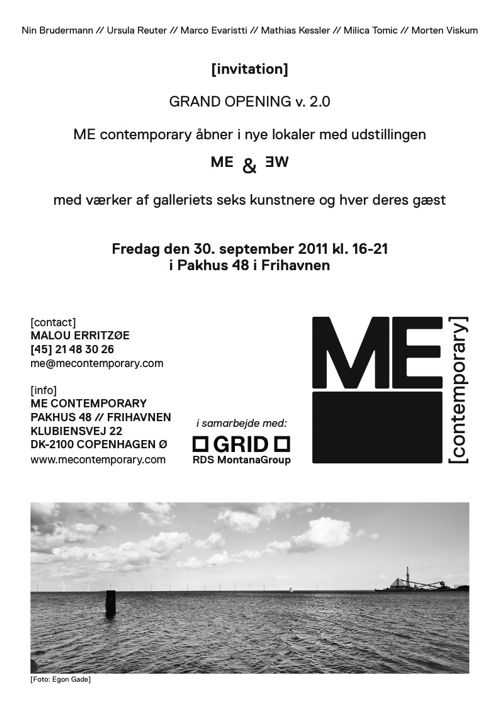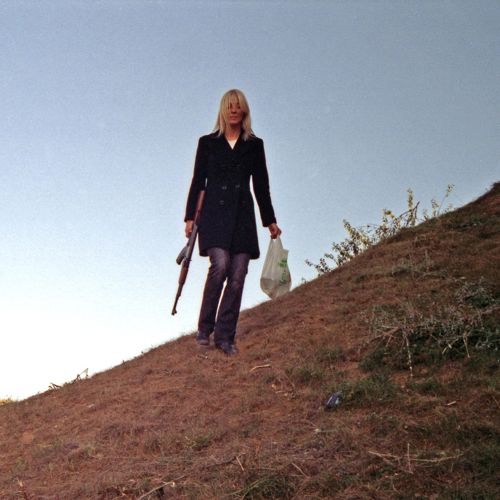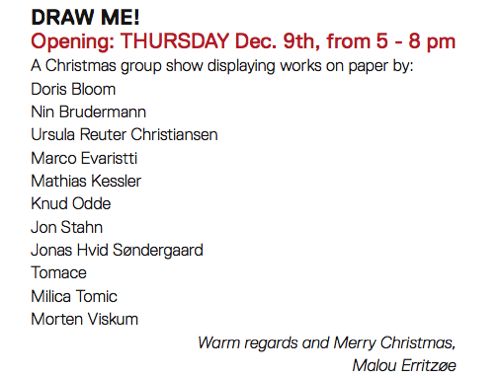
Tag: Milica Tomic
Draw Me!
Milica Tomic

Milica Tomic´s work deals with a variety of social, political and existential issues. Tomic´s research revolves around the roles and identities we take on / are imposed upon us, and in particular the different roles in crime, victim vs. perpetrator – and not least how and why the roles sometimes shift. In this field she investigates war, and the change in the perception of war, which has come from dealing with terrorism, where war is no longer a last resort for a political conflict, but a permanent condition, posing the question: who is terrorized and who is the terrorist?
In Reading Terror we meet three newer and on-going projects:
Reading Capital – An installation featuring photos and a video of prominent Texans who, from their desk in the financial community, or at home in their armchair, recite Karl Marx’s Capital.
Container – A project that revolves around the war crime that occurred in Afghanistan in November 2001, where Taliban prisoners were loaded into containers and transported though the desert for several days, en route to prison. During the transport, Northern Alliance soldiers fired their rifles against the container to create breathing holes, killing many within. The few prisoners who did survive were later executed. Although the story was later revealed, no pictures exist, which plays an integral role in the project.
One Day, Instead of One Night, a Burst of Machine-Gun Fire Will Flash, if Light Cannot Come Otherwise – A video / photo action which shows Tomic in an artistic intervention in a public space, moving through the streets with an AK47 in hand visiting sites where antifascist actions has taken place.
ME contemporary is pleased to present Milica Tomic´s first show in Denmark since her participation in the group show Re-Act in Kunsthallen Nikolaj in 2005. Here she displayed her video work “I am Milica Tomic” questioning constructions of identity and nationality.
Milica Tomic was born in 1960 in Belgrade. A visual artist who lives and works in Belgrade and Vienna, her choice of media includes video, film, photography, performance, action, sound and light installation, web projects, and discussions. Tomic’s work centers on issues of political violence, nationality and identity, with particular emphasis on the tension between personal experience and media-made images. In 2003, Tomic represented Yugoslavia at the Venice Biennale.
“Not For Sale”
ME contemporary will present its second group show, titled ”Not For Sale.’ Each of the six artists featured in the gallery this year has been invited to exhibit a piece from his/her own collection, which as the title of the show implies, is not for sale.
In a time of unstable global economy and shaky markets whose success or downfall greatly affect the art world, ME contemporary’s newest exhibition looks introspectively at this relationship and challenges the traditional role of the art gallery as a commercial space. The exhibition will be on view through July 3.
‘Not For Sale’ poses the question: ‘What makes a piece of art off limit?’ To the artist, the decision is often of a personal nature – a strong emotional connection to the work. To the market, gallery and collector, the experience of desiring a work of art that is off-limits can be both highly exciting and incredibly frustrating. Utilizing the traditional art-historical tool of story-telling, ‘Not For Sale’ explores some of these reasons by exhibiting the artwork alongside a narrative inspired by each artist.
The displayed works in ‘Not For Sale’ range from an early piece by Ursula Reuter Christiansen upon which her teacher, Joseph Beuys placed the finishing touches, to an intimate music video recorded by Nin Brudermann to her husband, during her stay aboard an ice breaker in connection with the project, ’12 O’clock in London.’ Also exhibited is Morten Viskum’s first painting, created by ‘the hand that would not stop painting,’ and a work from Marco Evaristti’s ‘Crash’ project from 1995, painted with the blood of Bangkok traffic accident victims. Artist Milica Tomic’s most prized pieces are empty sketchbooks whose pages, filled with drawings of victims of the Srebrenica Massacre, remained with the relatives who described their loved ones from memory. Mathias Kessler shows a photograph of an amorphous shape surrounded by white. Upon closer inspection, the amorphous form reveals itself as an obese body mired in thick rice pudding. Each work is followed by a story of the work’s origins and an explanation why the specific piece is not up for sale. In this way, the exhibition also provides a glimpse into the artists’ psyches – into their way of working and how they view their own art.

